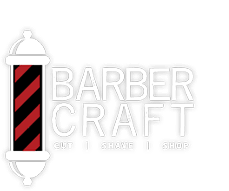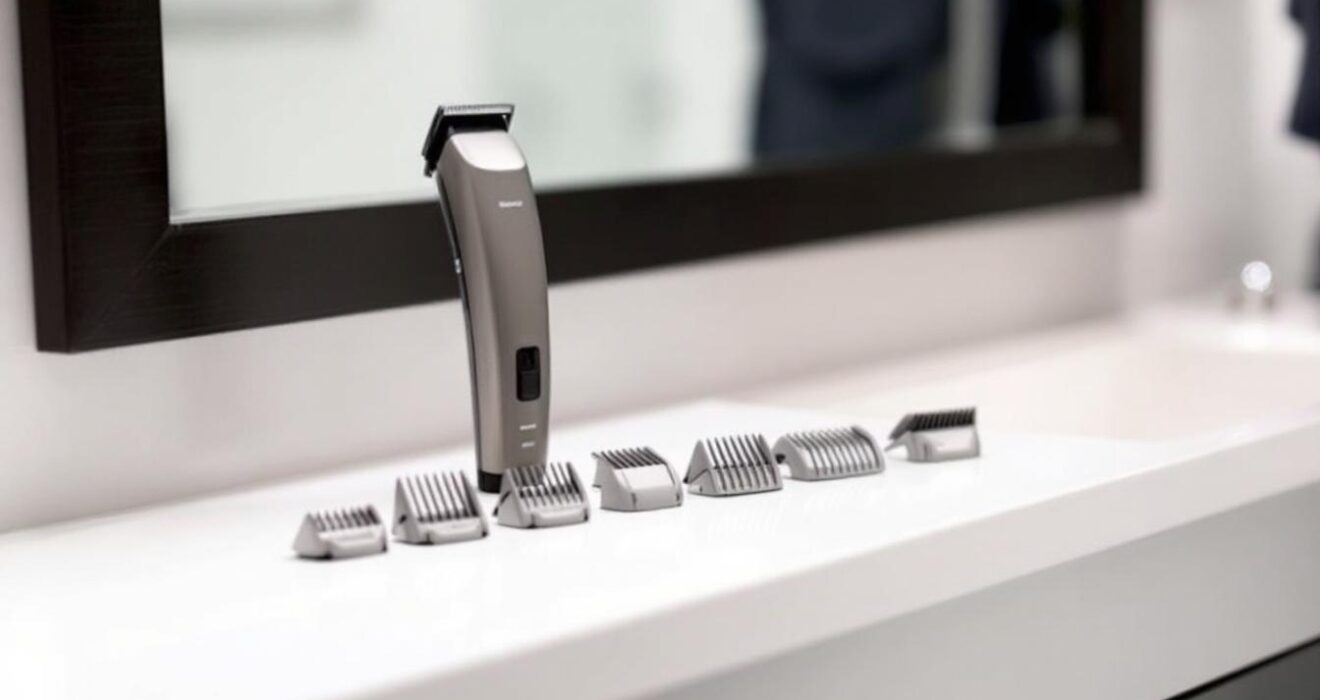How to Trim Your Beard with Guards
Mastering the art of beard trimming can transform your look and boost your confidence. At Barber Craft, we’ve seen countless men struggle with how to trim their beards with guards.
That’s why we’ve created this comprehensive guide to help you achieve the perfect beard shape and length. Whether you’re a beard trimming novice or looking to refine your technique, we’ll walk you through the process step by step.
How to Choose the Right Guard Length
Understanding Guard Sizes
Beard trimmer guards range from 1/16 inch (1.5mm) to 1 inch (25mm). For short stubble, use a Number 0 or Number 1 guard (1.5 mm – 3 mm). Medium beards typically require a Number 2 to Number 4 guard (6 mm – 13 mm). Full beards may need longer guards.
Matching Guards to Your Style
Your desired beard style influences guard selection. For a short, neat beard, start with a #2 or #3 guard. For a medium-length beard, use a #4 or #5. Longer, fuller beards require guards #6 and up. You can always trim shorter, but you can’t undo a too-short cut.
Face Shape Considerations
Your face shape should impact your guard choice. Longer guards on the chin area can help elongate round faces. Shorter guards on the sides can soften square jaws.
Hair Texture Matters
Hair texture affects guard selection. For coarse hair, start with a longer guard than you think you need. Thicker, coarser beards may require longer guards to tame the mane effectively, while finer beard hair might need shorter guards.
Experimentation is Key
We suggest you test different guard lengths in less visible areas first. This approach allows you to find the perfect length without risking your overall style. As your confidence grows, you’ll develop a better sense of which guards work best for your unique beard.
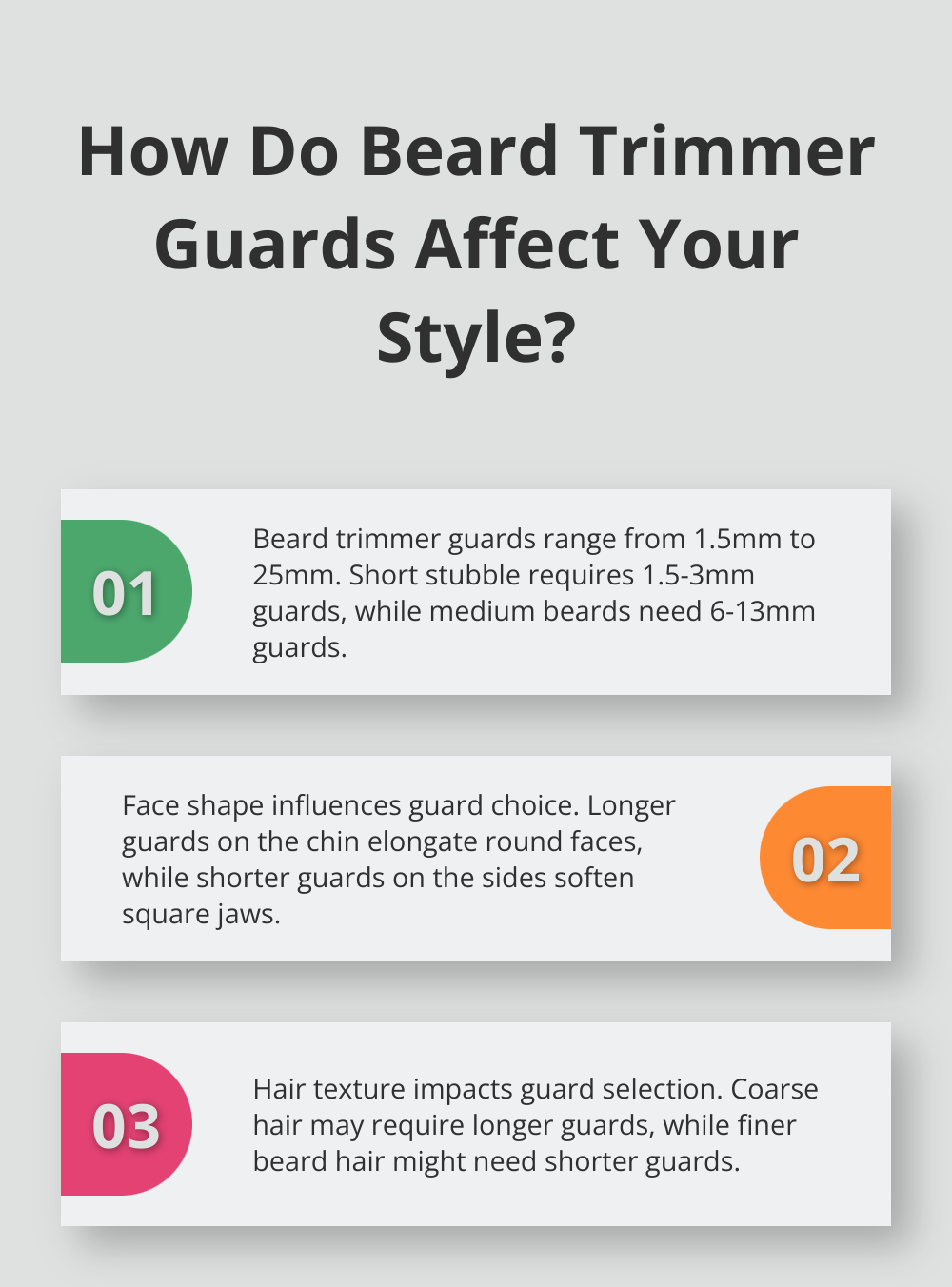
Now that you understand how to choose the right guard length, let’s move on to preparing your beard for trimming. This step ensures you achieve the best results from your chosen guard.
How to Prep Your Beard for the Perfect Trim
Clean and Dry Your Beard
Start with a thorough wash using a specialized beard shampoo. Most face washes and hair shampoos are designed to eliminate oil, but beards need some oil – without it, they get particularly dry and itchy. Rinse thoroughly and pat your beard dry with a clean towel. Avoid rubbing vigorously (this can cause frizz and split ends). Let your beard air dry completely before trimming. Wet hair appears longer, so trimming a damp beard might result in cutting off more than intended.
Detangle and Align
Once your beard is dry, use a wide-toothed comb to gently detangle any knots. Start from the bottom and work your way up to avoid pulling and causing discomfort. For longer beards, consider using a boar bristle brush to distribute natural oils and align the hairs. With sturdy bristles, a boar bristle brush massages your skin, encouraging blood flow and the distribution of nutrients vital to hair growth. This step is essential for achieving an even trim and identifying any areas that need extra attention.
Apply Beard Oil
A light application of beard oil serves multiple purposes. It softens the hair, makes it easier to trim, and reduces the risk of irritation. It also helps the trimmer glide smoothly through your beard, resulting in a more precise cut. Use just a few drops, warm the oil between your palms before massaging it into your beard and the skin underneath. This not only preps your beard for trimming but also promotes healthier growth.
Check Your Tools
Before you begin trimming, inspect your tools. Make sure your trimmer is clean, oiled, and has sharp blades. Dull blades can lead to uneven cuts and potential skin irritation. If you’re using scissors, ensure they’re sharp and specifically designed for beard trimming (regular household scissors won’t cut it, literally).
Set Up Your Space
Create a well-lit area for your trim. Natural light is best, but if that’s not possible, use bright, direct lighting. Position yourself in front of a large mirror, and if possible, have a handheld mirror ready for checking hard-to-see areas. Lay out all your tools within easy reach to make the process smoother.
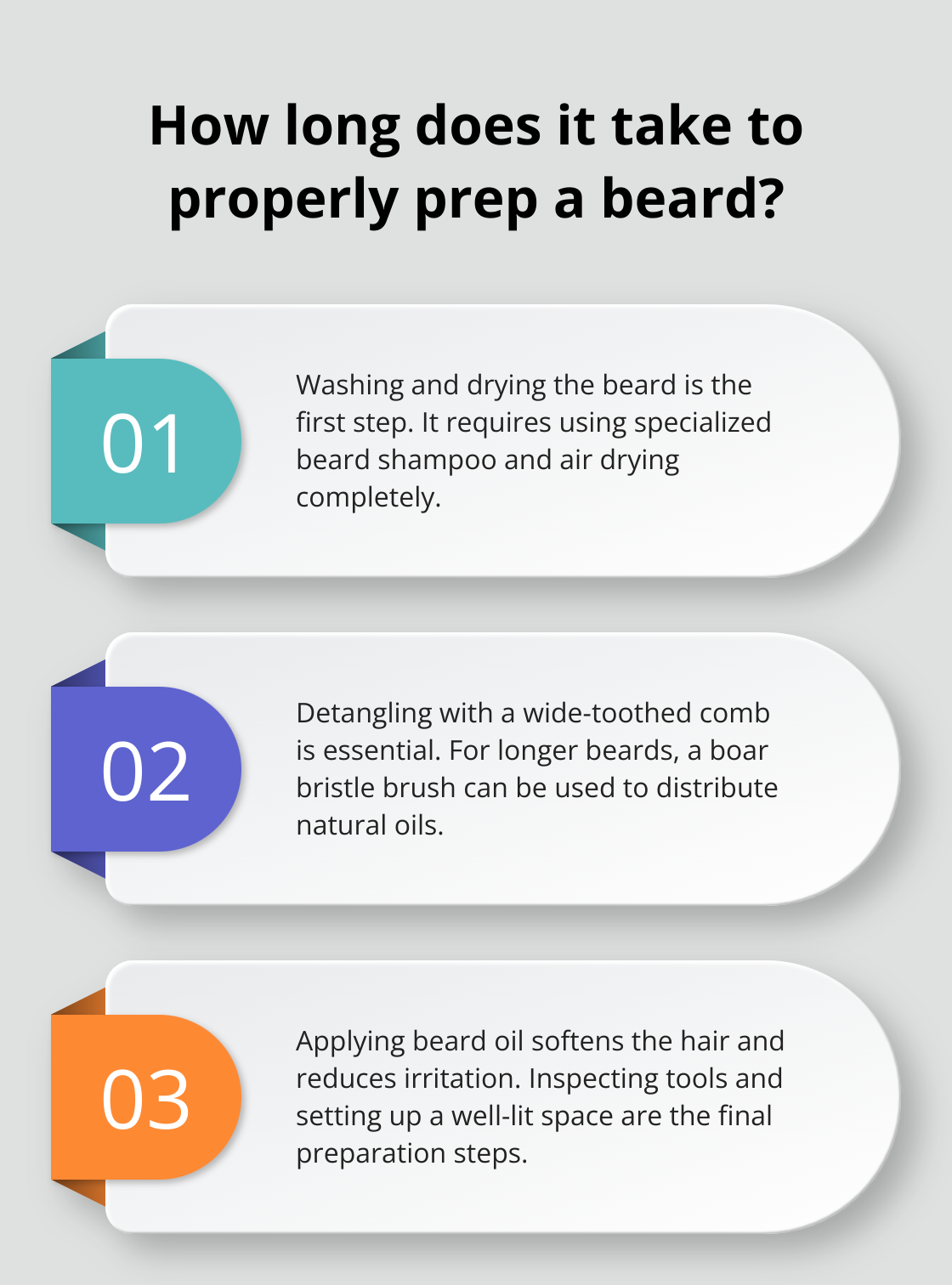
Now that you’ve prepped your beard and set up your space, you’re ready to start trimming. The next section will guide you through the step-by-step process of using guards to achieve your desired beard style.
How to Trim Your Beard with Guards
Attach the Guard Securely
Clean and oil your trimmer before you begin. Select your desired guard length and fit the comb onto the trimmer head. Test the attachment with a gentle tug to ensure it won’t come loose during trimming. A secure guard prevents uneven cuts and maintains your beard’s shape.
Start Long, Trim Shorter
Choose a guard longer than your target length. This approach allows for gradual reduction without removing too much hair at once. For instance, if you want a #4 (1/2 inch) finish, begin with a #6 guard.
Move the trimmer against your beard’s growth direction to lift the hairs for an even cut. Make slow, steady passes over your beard, slightly overlapping each stroke (this technique helps avoid missed spots).
Trim Different Beard Areas
Shaping your beard involves considering your face shape and choosing a suitable style. For cheeks, use upward strokes from your neckline to your ears. When you trim your chin and jawline, start at your neck and move upwards, following your face’s natural contours.
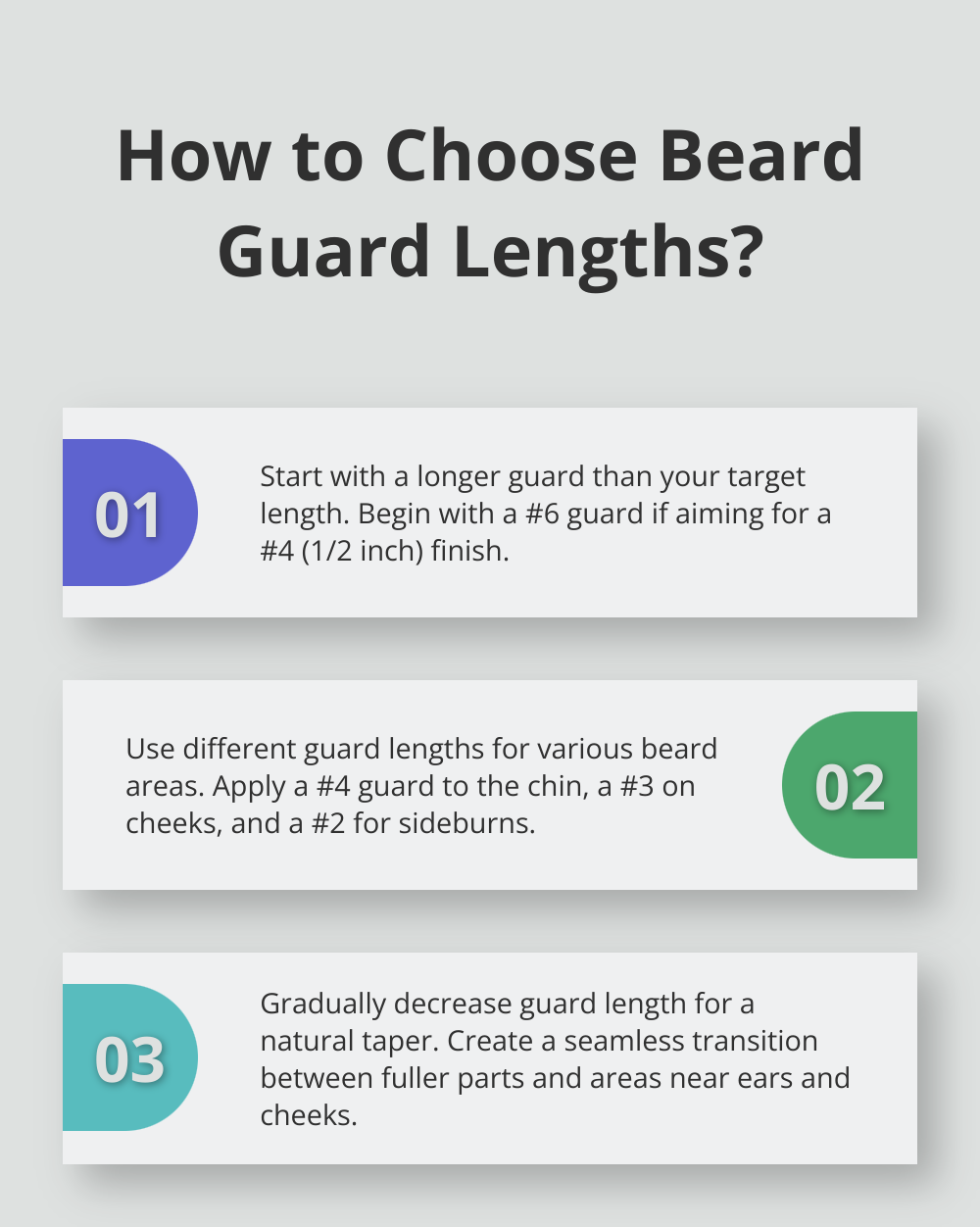
The mustache needs extra attention. Use the trimmer with the guard to maintain an even length, then switch to the bare blade for precise lip line detailing. Comb your mustache downward and trim any hairs that extend below your lip line.
Blend for a Natural Look
Create a seamless transition between different beard lengths through tapering. Use a longer guard on fuller parts of your beard (typically the chin and jawline) and decrease the guard length as you move towards your ears and cheeks.
For example, you might apply a #4 guard to your chin, a #3 on your cheeks, and a #2 for the sideburns. This technique creates a natural gradient effect and avoids harsh lines between different beard lengths.
Assess and Adjust
Step back frequently to evaluate your progress. It’s easy to focus on details and lose sight of the overall shape. If you notice uneven areas, don’t worry. Simply adjust your guard length and make careful, minimal passes to even things out.
These techniques will help you achieve a professionally trimmed beard at home. However, if you feel uncertain or want expert assistance, the experienced barbers at Barber Craft (with over 25 years of experience) are always ready to help you look your best.
Final Thoughts
Mastering how to trim your beard with guards will elevate your grooming routine. You should choose the right guard length, prepare your beard properly, and follow our step-by-step guide to achieve a well-groomed look. Regular maintenance (every 1-2 weeks) keeps your beard looking its best and prevents it from becoming unruly.
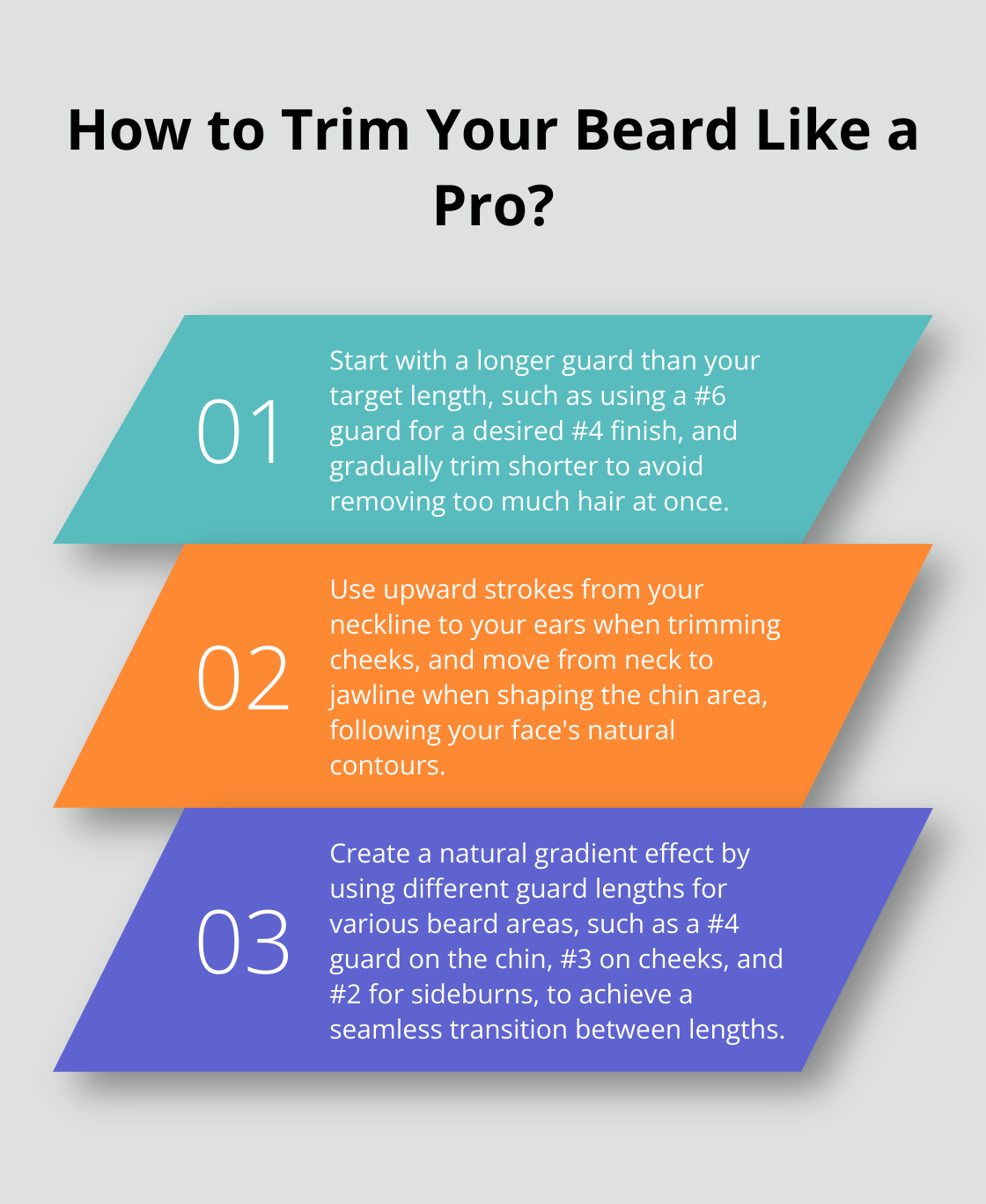
Experiment with different styles and guard lengths to find your perfect look. Your beard expresses your personality, so don’t hesitate to try new techniques as you become more comfortable with your trimmer and guards. This process might take some trial and error, but it’s worth the effort to find your ideal style.
When you want a professional touch or expert advice on trimming your beard with guards, the experienced barbers at Barber Craft can help. Our skilled team in downtown San Diego offers a range of services to keep you looking sharp and feeling confident. Visit us for a quick trim or a complete beard makeover to achieve your desired look.
